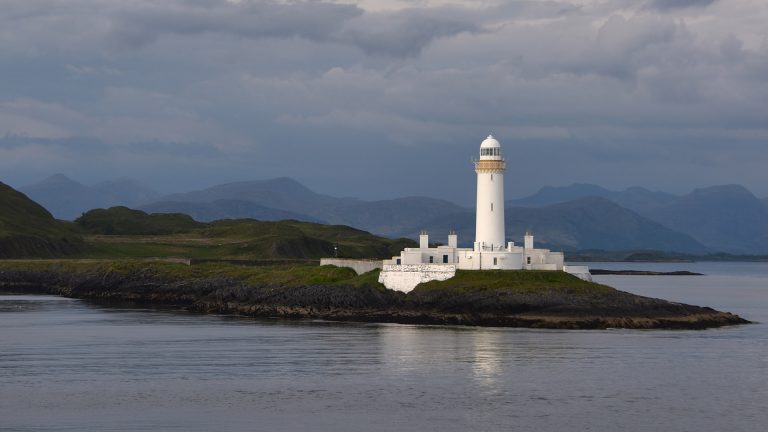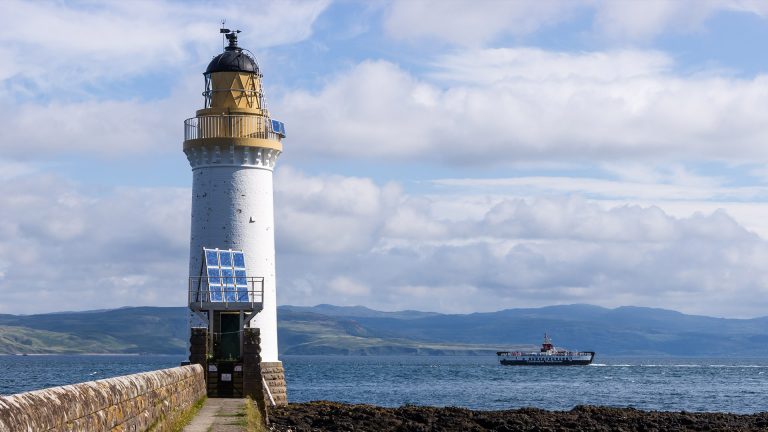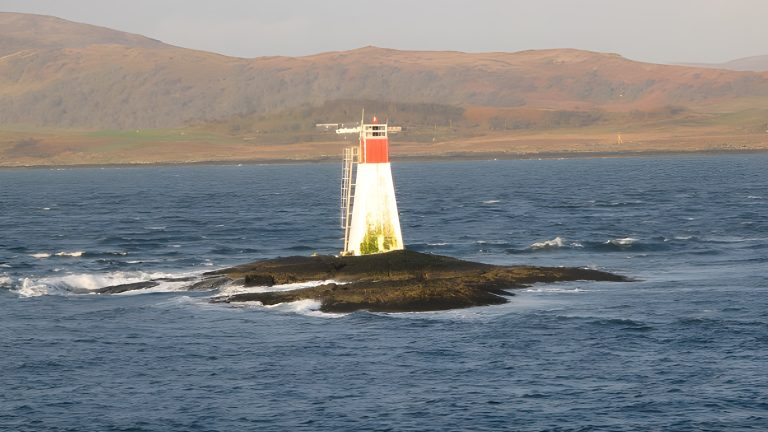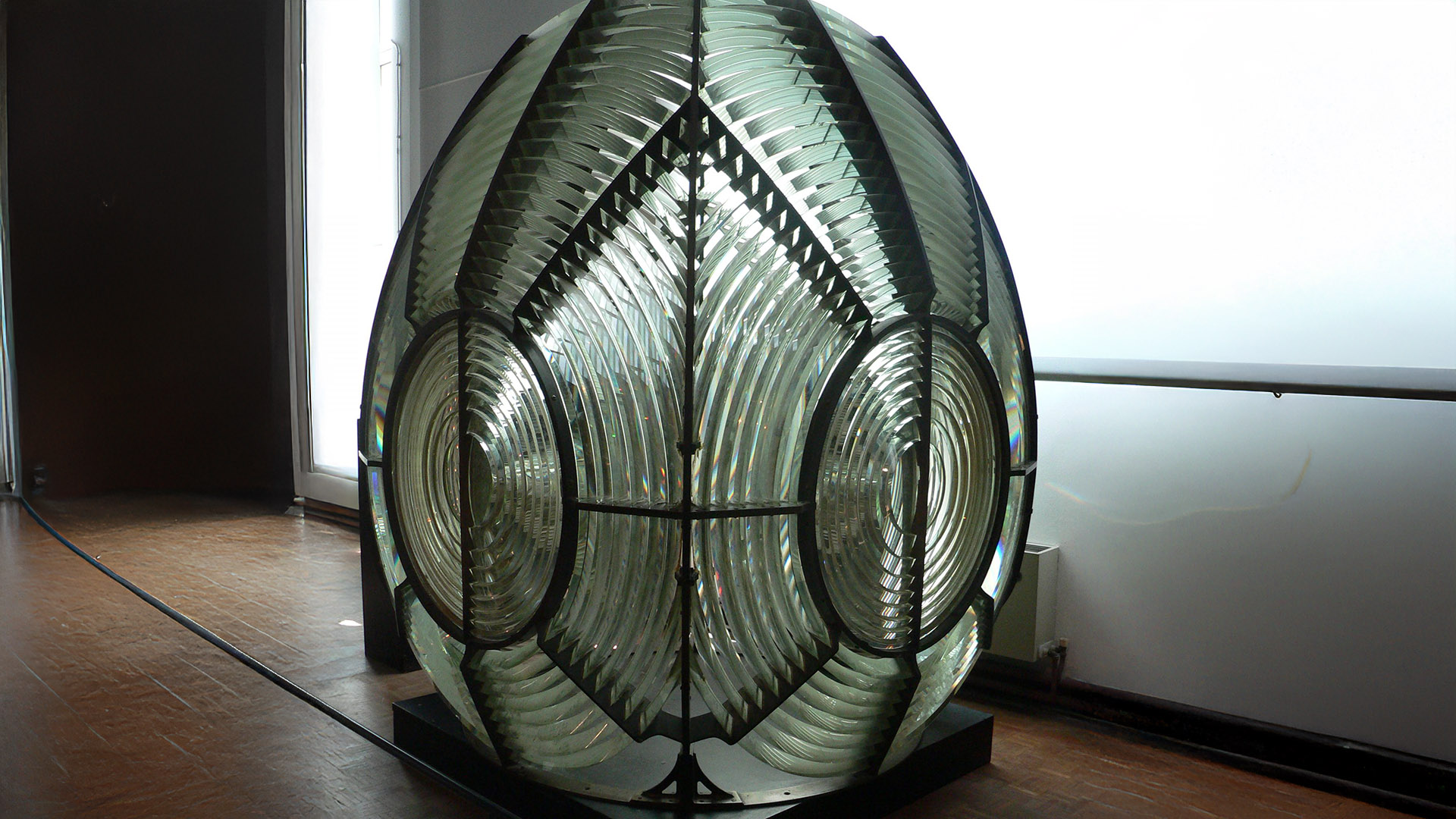Along the jagged coastline of the Isle of Mull, lighthouses have watched over the sea for nearly two centuries. These towers were never just scenic landmarks. They were built to protect life, guide commerce, and withstand the unforgiving Atlantic. From the elegant geometry of early Fresnel lenses to the quiet peril of mercury exposure, Mull’s lighthouse legacy is a blend of technical mastery and human tenacity.
The Sound of Mull: Why This Coast Needed Light
The Sound of Mull is one of Scotland’s most vital sea routes. It links the sheltered waters of the Firth of Lorn to the Minch and Hebridean sea lanes. But this beautiful channel is narrow, tidal, and scattered with submerged hazards. Fog, strong currents, and erratic weather made it a perilous crossing. Lighthouses were positioned with strategy and foresight to reduce wrecks and guide mariners through safe waters.
The Lighthouse System: Mull and Its Maritime Web
- Rubha nan Gall Built in 1857 near Tobermory by David and Thomas Stevenson. The white masonry tower marks the entrance to Tobermory Bay. Still active and accessible by footpath.
- Lismore Lighthouse Located on Eilean Musdile and operational since 1833. It marks the Sound’s southern entrance and is visible from Mull’s ferry routes.
- Lady Rock Light Mounted on a tidal reef off Duart Point. Warns of a reef invisible at high tide. Best viewed from coastal lookouts or passing vessels.
- Ardmore Point Light A 1958 modern aluminium tower. Aids vessels navigating the western Sound.
- Duart Point Light Works in tandem with Lady Rock to secure the southeastern channel. A key visual marker at the approach to Duart Castle.



Offshore Icons and Their Mull Connection
Though offshore, Dubh Artach and Skerryvore were historically staffed via Erraid, a tidal island off Mull. Keepers lived on Erraid between rotations. The infrastructure there remains as a legacy of the intense logistical efforts it took to support Scotland’s remotest lights.
Life as a Lighthouse Keeper
Before automation, lightkeepers maintained the lantern flame, wound mechanical systems, documented weather, and kept the optics pristine. Conditions could be harsh. Storms isolated stations. Illnesses or breakdowns had to be handled alone. Some lights required weeks-long postings in exposed locations, both at sea and ashore.
The Mercury Hazard
To rotate heavy Fresnel lenses smoothly, many lighthouses used trays of liquid mercury as a bearing. It was effective, but highly toxic. Prolonged exposure led to tremors, confusion, and neurological damage. Keepers regularly strained mercury by hand to remove impurities. With little awareness of its dangers, they absorbed vapours in tight quarters. The danger lingered in near silence, year after year.
Automation and Changing Times
From the 1960s onward, most lights around Mull were automated. Clockwork gave way to electric motors. Oil lamps were replaced with efficient optics and solar panels. The keepers left. The stations fell silent. Some cottages now serve as rentals or have been left to weather back into the coastline. The vigilance remained, but the hands that tended it were no longer needed.
Visiting Mull’s Lighthouses
- Rubha nan Gall – Accessible by foot from Tobermory.
- Lismore Lighthouse – View from ferries crossing to Craignure.
- Lady Rock – Best seen from Duart Castle area or ferry routes.
- Ardmore Point – Visible from coastal walks near Salen.
- Erraid – Reachable on foot at low tide from the Ross of Mull.
- Duart Point Light – Accessible via a short walk from Duart Castle.
Preserving the Legacy
The Northern Lighthouse Board continues to maintain the operational structures. Community groups and historians are archiving stories, documenting ruins, and restoring what they can. These towers are part of the island’s identity. Their heritage reaches beyond steel and stone. They mark the rhythm of vigilance that once defined Mull’s edge of the world.
Conclusion
Mull’s lighthouses remain steadfast. They still flash through storm and dusk. Their beams still stretch across the Sound. But the hands that once polished their glass and wound their gears are long gone. The story now belongs to the land, the light, and the memory of those who kept watch when the night was darkest.


